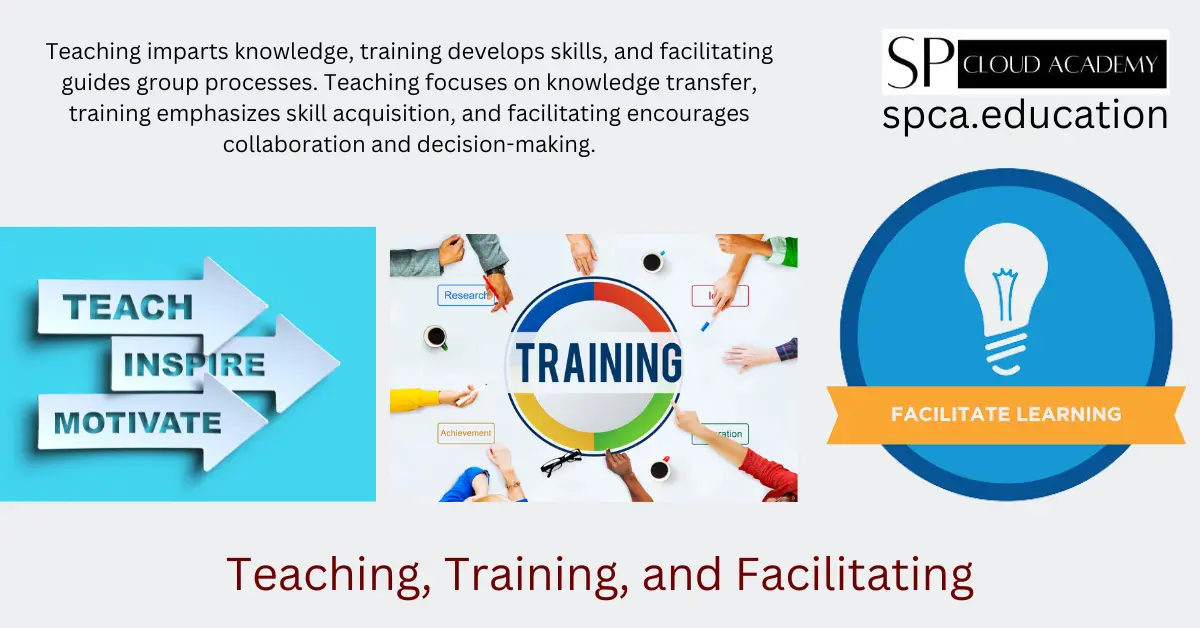Education is the key to unlocking the potential within individuals and society as a whole. It equips us with knowledge, skills, and values necessary for personal and professional growth. However, education is not a one-size-fits-all concept. It can be approached in various ways, each with its own strengths and weaknesses. In this article, we will delve into the three main approaches to education: teaching, training, and facilitating. By understanding their differences and similarities, we can better appreciate the power of education and its transformative impact.
Understanding Teaching as a Traditional Approach to Education
Teaching has long been the cornerstone of education. It involves the transfer of knowledge from a teacher to a student. The teacher assumes the role of an expert, imparting information through lectures, demonstrations, and discussions. This approach is often used in formal educational settings, such as schools and universities, where the primary goal is to disseminate a specific curriculum.
Teaching provides structure and guidance to learners, ensuring that they acquire the foundational knowledge necessary for further learning. It fosters discipline, critical thinking, and problem-solving skills. However, it can sometimes be a passive and one-way process, with students being mere recipients of information. To overcome this limitation, innovative teaching methods, such as active learning and student-centered approaches, have emerged. These approaches encourage student engagement and participation, making the learning experience more interactive and dynamic.
Exploring the Concept of Training in Education
While teaching focuses on knowledge acquisition, training emphasizes skill development. It is a more practical and hands-on approach, aimed at preparing individuals for specific tasks or professions. Training often occurs in vocational schools, technical institutes, and corporate settings. It involves a set of structured activities, such as simulations, role-playing, and on-the-job training, to enhance learners’ practical skills and competencies.
Training is characterized by its goal-oriented nature. It focuses on achieving specific learning outcomes and measurable performance indicators. By providing learners with practical experience and real-world scenarios, training bridges the gap between theory and practice. It enables individuals to apply their knowledge in practical settings, thereby increasing their employability and professional growth. However, training can sometimes be limited in scope, focusing on narrow skill sets without fostering holistic development.
The Role of Facilitation in Education
Facilitation takes a different approach to education by emphasizing the learner’s active participation and self-directed learning. Instead of having a traditional teacher-student dynamic, facilitators act as guides, mentors, and facilitators of learning. They create an environment that fosters collaboration, critical thinking, and problem-solving. Facilitation encourages learners to take ownership of their learning journey and develop lifelong learning skills.
Facilitation is often used in non-formal and informal educational settings, such as workshops, seminars, and community-based learning. It promotes learner autonomy, creativity, and self-reflection. By encouraging learners to construct their own knowledge and meaning, facilitation nurtures a deeper understanding and application of concepts. However, facilitation requires skilled facilitators who can effectively guide learners and create a supportive learning environment.
Comparative Analysis of Teaching, Training, and Facilitating
While teaching, training, and facilitating have distinct characteristics, they are not mutually exclusive. In fact, they can complement each other to create a more holistic and effective educational experience. Let’s compare these approaches based on key factors:
- Learning Outcomes: Teaching focuses on knowledge acquisition, training on skill development, and facilitating on self-directed learning. Each approach has its own set of learning outcomes, ranging from theoretical knowledge to practical skills and personal growth.
- Learner Engagement: Teaching can sometimes be passive, with students being passive recipients of information. Training and facilitating, on the other hand, encourage active participation and engagement. Learners are actively involved in their own learning process, which enhances motivation and retention.
- Role of the Educator: In teaching, the educator assumes the role of an expert who imparts knowledge. In training, the educator acts as a mentor and coach, guiding learners towards specific goals. In facilitation, the educator becomes a facilitator of learning, creating a supportive environment for learners to explore and discover.
- Context and Setting: Teaching is commonly used in formal educational settings, such as schools and universities. Training is often conducted in vocational schools and corporate training programs. Facilitation can occur in various settings, including workshops, seminars, and community-based learning.
Benefits and Drawbacks of Each Approach
While each approach has its own strengths, it also comes with certain limitations. Let’s explore the benefits and drawbacks of teaching, training, and facilitating:
Teaching:
Benefits:
- Provides structured and comprehensive knowledge
- Fosters discipline and critical thinking skills
- Enables efficient dissemination of information
Drawbacks:
- Can be passive and one-way
- May not cater to individual learning styles
- Limited scope for practical application
Training:
Benefits:
- Focuses on practical skill development
- Enhances employability and professional growth
- Bridges the gap between theory and practice
Drawbacks:
- Can be limited in scope and narrow in focus
- May overlook holistic development
- Requires specific resources and infrastructure
Facilitating:
Benefits:
- Promotes active learner participation
- Encourages self-directed learning and critical thinking
- Nurtures lifelong learning skills
Drawbacks:
- Requires skilled facilitators
- May lack structure and guidance
- Not suitable for all learning contexts
Here’s a table outlining the differences between teaching, training, and facilitating:
| Aspect | Teaching | Training | Facilitating |
|---|---|---|---|
| Definition | Imparting knowledge or skills to students or learners. | Providing instruction and practice to develop specific skills or competencies. | Guiding a group through a process to achieve a goal or outcome. |
| Focus | Knowledge dissemination and comprehension. | Skill acquisition and application. | Group interaction and decision-making. |
| Role of Facilitator | Instructor or expert delivering information. | Instructor or expert providing guidance and feedback. | Neutral party guiding group discussion and activities. |
| Approach | Typically one-way communication; instructor-centered. | Combination of instruction, demonstration, and practice; learner-centered. | Collaboration, group discussion, and activities; participant-centered. |
| Goal | To transfer information or knowledge to learners. | To develop specific skills or competencies in learners. | To guide group members toward achieving a common objective. |
| Feedback | Often provided by the instructor to evaluate comprehension. | Provided by instructor and peers to enhance skill development. | Encourages self-reflection and peer feedback among participants. |
| Example | Lecture in a classroom setting. | Hands-on workshop or simulation. | Group discussion or problem-solving session. |
This table highlights the key differences between teaching, training, and facilitating in terms of their definitions, focus, roles, approaches, goals, and feedback mechanisms.
Case Studies on Successful Implementation of Teaching, Training, and Facilitating
Let’s explore some case studies that highlight the successful implementation of teaching, training, and facilitating in various educational contexts:
- Teaching: In a high school in Japan, teachers adopted a student-centered approach to teaching, focusing on active learning and collaborative projects. This approach not only improved students’ academic performance but also enhanced their problem-solving and communication skills.
- Training: A multinational corporation implemented a comprehensive training program for its employees, combining classroom-based sessions with hands-on simulations and on-the-job training. This program resulted in increased productivity, improved customer satisfaction, and higher employee retention rates.
- Facilitating: In a community-based learning center in a rural village, facilitators created a supportive and inclusive learning environment. They encouraged learners to explore their interests and passions, resulting in increased confidence, creativity, and community engagement.
Innovations in Education: Blended Learning and Flipped Classrooms
As technology continues to advance, so does the field of education. Two innovative approaches that have gained traction in recent years are blended learning and flipped classrooms. These approaches leverage technology to enhance the learning experience and promote personalized learning.
Blended Learning:
Blended learning combines traditional face-to-face instruction with online learning resources and activities. Learners have the flexibility to access content and engage in interactive online discussions outside the classroom. This approach promotes self-paced learning, collaboration, and the integration of multimedia resources. Blended learning has been shown to improve student engagement, achievement, and retention.
Flipped Classrooms:
In a flipped classroom, the traditional model of instruction is flipped. Learners review instructional materials, such as videos or readings, before the class session. Classroom time is then dedicated to discussions, problem-solving, and hands-on activities. This approach allows for more personalized and interactive learning experiences. Flipped classrooms have been found to increase student participation, critical thinking skills, and deeper understanding of concepts.
The Future of Education: How Teaching, Training, and Facilitating Can Evolve
As we look to the future, it is clear that education will continue to evolve. The boundaries between teaching, training, and facilitating will become increasingly blurred, giving rise to a more integrated and holistic approach to education. Here are some trends that are shaping the future of education:
- Personalized Learning: With advancements in technology, education can be tailored to individual learner needs and preferences. Adaptive learning platforms and artificial intelligence can provide personalized recommendations and feedback, enhancing the learning experience.
- Lifelong Learning: In a rapidly changing world, continuous learning is essential. Education will no longer be limited to formal settings but will extend throughout one’s lifetime. Lifelong learning opportunities will be more accessible and flexible, catering to diverse learner needs and aspirations.
- Collaborative Learning: The future of education will emphasize collaboration and co-creation. Learners will engage in interdisciplinary projects, working with peers from different backgrounds and cultures. This will foster creativity, empathy, and global citizenship.
- Global Education: Education will transcend geographical boundaries, connecting learners from around the world. Virtual classrooms, international collaborations, and cultural exchanges will promote a global perspective and intercultural understanding.
Conclusion: Embracing a Holistic Approach to Education
In conclusion, teaching, training, and facilitating are three distinct approaches to education, each with its own strengths and weaknesses. However, they are not mutually exclusive. By embracing a holistic approach that combines the best elements of these approaches, we can unlock the true power of education. The future of education lies in personalized, collaborative, and lifelong learning. As educators, learners, and policymakers, let us work together to create an inclusive and transformative educational system that empowers individuals and fosters societal progress.
See Also
Teaching and Learning; https://spca.education/category/teaching-and-learning/
-
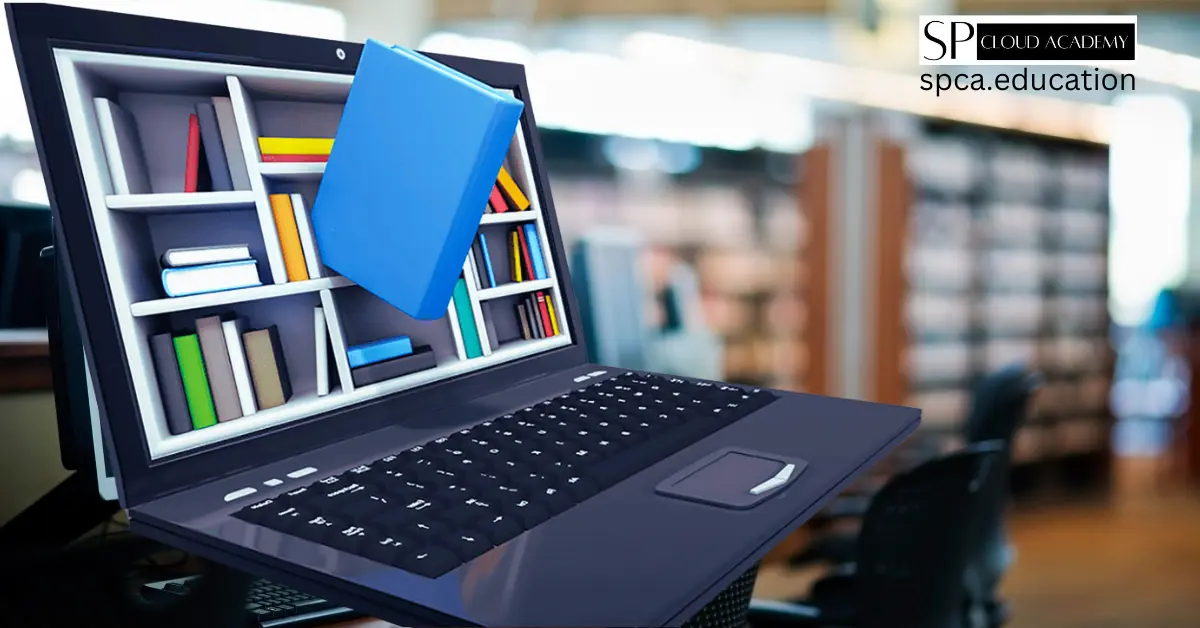
The Ultimate Guide to Creating and Publishing an e-Library on WordPress: A Step-by-Step Approach
-
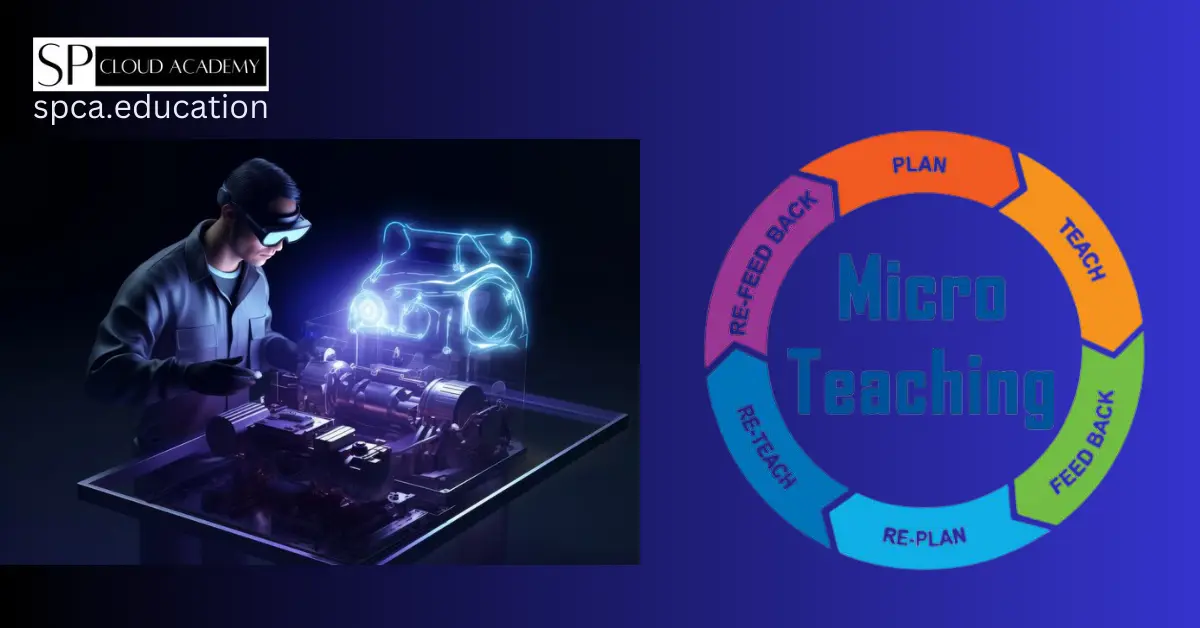
The Art of Microteaching: A Step-by-Step Guide to Success
-

Mastering the Art of Effective Communication: Presentation Techniques and Public Speaking Skills
-

The Ultimate Guide to Organizing a Successful Webinar: Expert Tips and Strategies
-
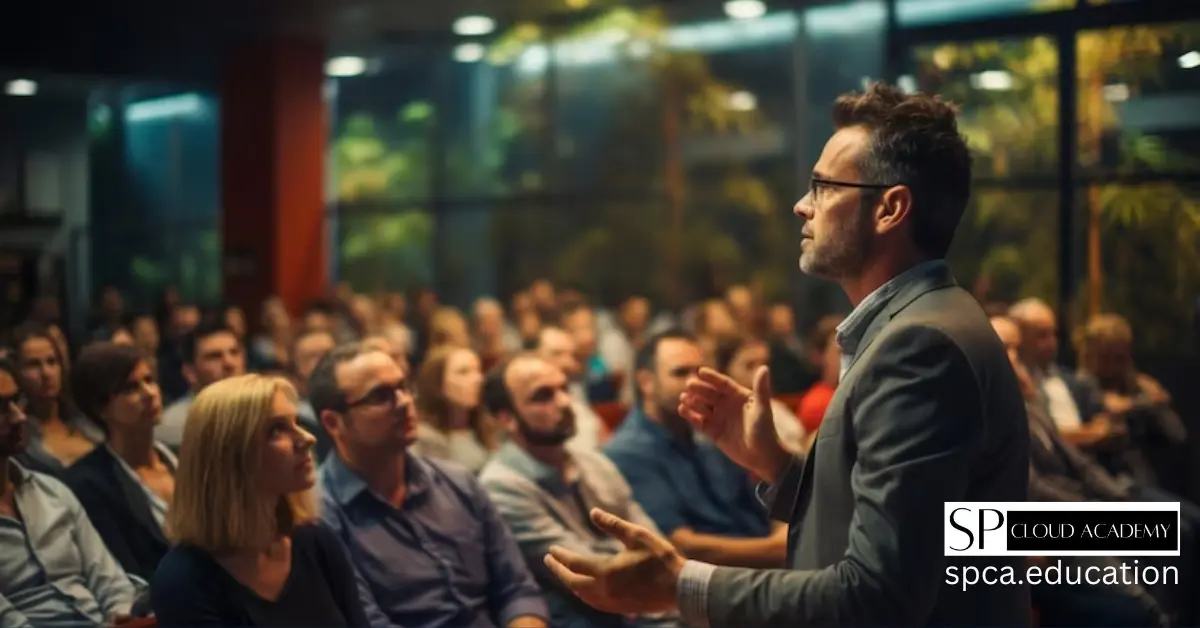
A Comprehensive Guide to Different Types of Academic Gatherings: Exploring the Key Components and Benefits
-
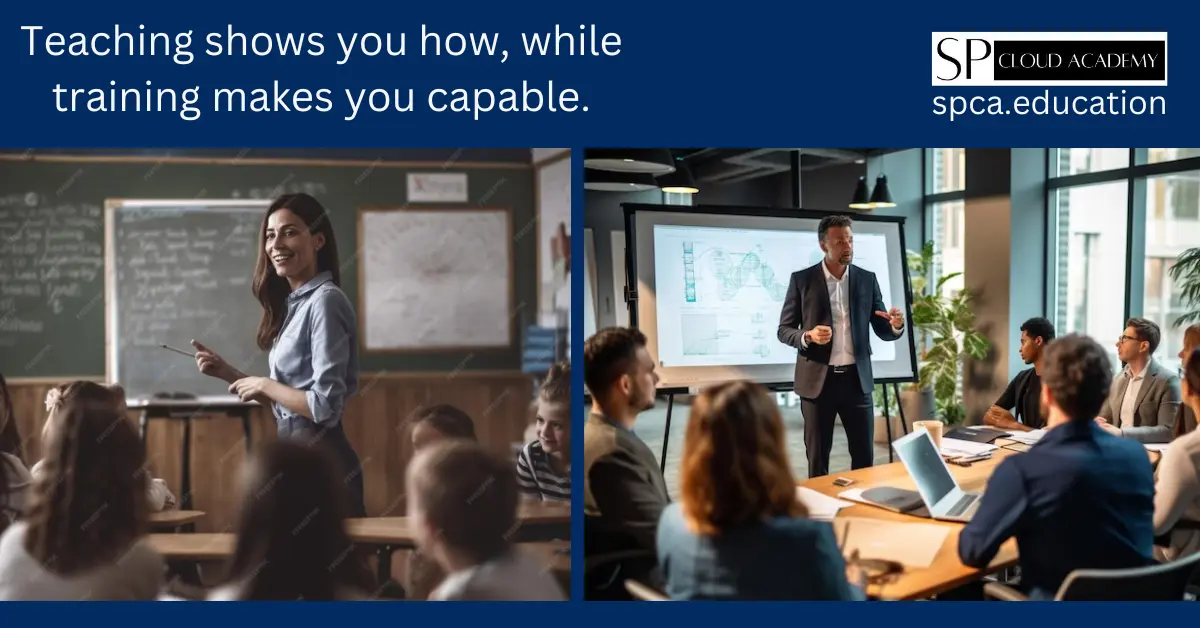
Effective Strategies: Navigating the Distinction Between Teaching and Training
